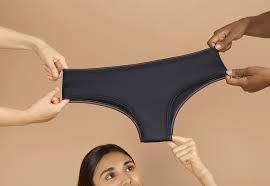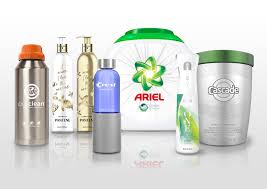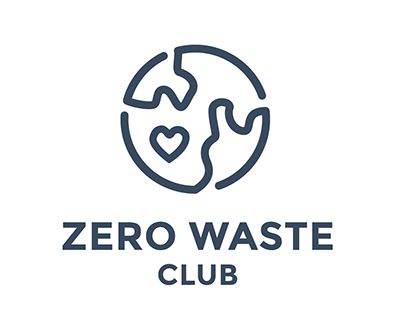Recycling is Sustainable, Not Perfect
Posted by Pawan Saunya onWhen I was a kid, I was told that to be sustainable, I needed to recycle. Glass, plastic, aluminum, cardboard- it all belonged in the blue bin. For years, I recycled these materials mindlessly in an effort to save the planet. However, recycling isn’t as sustainable or straightforward as I once thought, especially after China’s ban on some recycling imports left the global recycling system in chaos.
THE BAD:
The truth is, a lot of what we put in our blue bins doesn’t even end up getting recycled. Some facilities take in more recyclables than they can handle and end up sending their surplus to landfills. Other times, facilities end up with recycling that has been contaminated, rendering it unrecyclable. This is why China stopped taking a lot of the world's recyclables- the shipments they were receiving were too contaminated. Contaminants include things like most to-go coffee cups, plastic bags, and low-grade plastics, which are all unrecyclable. Food waste is also a big contaminant, as it renders materials unrecyclable. These contaminants usually arise from single-stream recycling systems where everything is placed in one bin and consumers receive little to no guidance on what can and can’t be recycled. These contaminants make it more expensive to process recyclables, and sometimes cause them to be sent to the landfill.
The other problem is that some materials can only be recycled a few times before they ultimately end up in the landfill. Paper can only be recycled five to seven times before it’s unrecyclable, but plastic is the worst- it can only be recycled one to two times. For example, say you buy a container made from virgin plastic, and when you’re done with it, you recycle it. Assuming it actually gets recycled, it will have to be recycled into something that is made of lower grade plastic, such as a household item, because the polymers in the plastic will get broken down in the recycling process. When that household item then gets sent to be recycled at the end of its life, it probably won’t be recycled into anything because of being too low grade and not meeting recycling requirements.This creates a lot of contamination problems, as most people think you can just throw anything made of plastic into recycling. In reality, if what you’re attempting to recycle is too low-grade of plastic, it needs to go straight to a landfill, where it will take over 400 years to degrade. Because of both contamination issues and the dwindling recyclability of plastics, 71% of the world's plastic is sitting as waste in landfills or as litter in habitats.and only 9% is recycled.
This issue with plastic is also because of the complexity of our plastic system. There are so many different kinds of plastic used to make different goods that it makes it hard for consumers to know which plastics they can and can’t recycle. There are seven predominantly used types of plastics that vary in their recyclability, and to make it more complicated, all recycling facilities differ in what plastics they will take. Consumers generally either think they can recycle all plastics, or get so frustrated trying to figure out what plastics they can or can’t recycle that they throw them all in the recycling, posing a contamination risk, or send them straight to a landfill.

THE GOOD:
The good news is some materials don’t have dwindling recyclability- they can be recycled over and over and over again. Glass and metal, most notably aluminum, are able to be recycled indefinitely without sacrificing their quality or durability. This means if you’re recycling anything made from glass or metal, there’s a higher chance that it’ll be recycled and won’t contaminate batches of recycling. It also means these materials never have to end up sitting in a landfill or polluting natural habitats- they can always be reused or recycled. However, like all materials, you still have to make sure you wash off any food that is on the material when you’re recycling, or you’ll be posing a contamination risk.
The other good news is that recycling saves energy, resources, and money no matter what material you’re dealing with. Recycling aluminum is particularly energy efficient and money saving, with recycled aluminum taking 95% less energy to create than new aluminum. Making recycled materials from steel, glass, paper, and plastic also requires less energy than creating new materials, just not quite at the level of aluminum. Using recycled materials rather than new also means less raw materials and natural resources will have to be extracted, which decreases habitat destruction and emissions related to resource extraction. Saving energy and resources ultimately results in saving money, and helps mitigate climate change by reducing emissions.
Overall, recycling is a good thing- it’s at the heart of a circular economy and allows us to reuse products that are at the end of their life rather than throwing them to a landfill. It reduces energy use, lowers natural resource extraction, decreases greenhouse gas emissions, and it saves us money. However, as much as we need recycling, we also need to reduce our need to recycle by switching to using reusable, long lasting products, and we need to overhaul our recycling system with the help of circular legislation and local governmental action.

THE SOLUTIONS:
First, we need to reduce what we consume and work to reuse what we do. Stepping away from single-use products, even if they are made from infinitely recyclable materials like glass and aluminum, and moving towards reusable products will reduce the number of materials that are sent to recycling, therefore enhancing the quality of our recycling facilities. Single-use products that are made from recycled materials are more sustainable than single-use products made from raw materials, but what’s even more sustainable is using reusable products made out of materials like glass and aluminum, and only sending them to be recycled once they’re at the end of their life. By switching to a system where we predominately create and recycle reusable goods, rather than single-use, we reduce the total quantity of goods we are creating and recycling, but we maximize the amount of energy, resources, emissions and money we save.
The second thing we can do to enhance our recycling system is to make our plastic system less complex and to move away from plastic in general. Ideally, to do this, we would streamline our plastic production into two types of plastic- one rigid and one flexible- that all recycling facilities accept. This would simplify both the creation and disposal of plastic, and would make it easier for consumers to recycle, and would also create a higher market value for these plastics that businesses would want to tap in to by collecting back plastic for reuse. However, this is unlikely to happen as it would take a massive manufacturing overhaul, and all plastics are eventually rendered unrecyclable anyways, therefore the best thing to do is to avoid plastic as much as possible. This reduces recycling contamination, decreases plastic pollution, saves marine habitats, and reduces the general environmental harm caused by plastic creation.
Lastly, we need to move away from single-stream recycling systems into pre-sorted recycling systems. Essentially, a single-stream recycling system is one where you throw all of your recyclables into one bin and they are sorted after collection. While this makes recycling easier, it disconnects consumers from the process of recycling, as they don’t have to be as familiar with the different materials their local recycling facility takes. These systems are all the rage in America- a country with a failing recycling system. In countries like Wales where recycling is wildly successful, a system where consumers sort their recycling before collection is used. By having consumers sort their recycling, the consumers are forced to become familiar with what their local recycling facility can recycle, which reduces contamination rates and increases recycling productivity. To incentivize people to do this, fees are charged on garbage pickup based on weight, so consumers will take the extra time to sort their recycling rather than throwing it all in the garbage. While there is a large learning curve, these systems are proving to be at the heart of countries who are making strides towards zero waste goals.
Companies who want to tap into the money-saving abilities of recycling could prove to be the pioneers of more efficient recycling systems. Tech giant Apple is working to use no raw materials in manufacturing- they want to source all of their materials from things like dead devices and manufacturing scrap. They have a MacBook air with a recycled aluminum case, and a robot that can speedily rip apart iPhones for reuse. However, Apple will have to make a lot more strides in order to reach their goal of being 100% circular. If they have the motivation and support from investors, they could be pioneers of circular architecture in both the business and waste management world. They would have to figure out how to recover a large percentage of the products they sell once their consumers are done with them, which would require a systems overhaul from Apple, Apple consumers, and waste management services.

While recycling has its problems, we should never forget that it’s the elementary pinnacle of environmental sustainability for a reason. Recycling has enormous potential to launch us into the heart of a circular economy, but we have to tap into this potential by valuing the three R’s in order (reduce what you consume, reuse what you can, and then recycle what you need) and overhauling both our recycling and plastics system. This will take participation from business, government, academia, and consumers, and won’t prove to be easy- but that doesn’t mean it’s impossible.

Kayla Guilliams
Is the blog manager for Zero Waste Club, combining her love for writing with her passion for all things environmental sustainability. She is currently a student at the University of North Carolina at Chapel Hill where she is studying journalism, environmental studies, and food studies in hopes of building a career in environmental activism. You can find her on Instagram as @kaylaguilliams.
Six Companies Who Are Paving the Way for a Sustainable Future
Posted by Pawan Saunya onAs the climate crisis looms and marine environments become plagued with plastic pollutants, transitioning our economy to one that values sustainability and a circular model is more vital than ever. As governments remain hesitant to overhaul their economy to one that rids of single-use products, values sustainable development, and promotes a zero-waste mindset, businesses are taking it upon themselves to transition their business models to ones that push forward this idea of a zero-waste, circular economy. Here are six companies who are inspiring us to think circular.
Subaru
While it may seem ironic to include a car manufacturer in with companies doing environmental good, Subaru is truly creating a circular model of car manufacturing that could serve as a model for other manufacturers in years to come. Subaru is a zero-landfill automaker and has been such since 2004- the last time they sent something to a landfill. They have been pioneers of sustainable practices in the automotive industry since the late 80s, receiving a Recycling Achievement award in 1989 for their efforts to reduce waste and an Environmental Purification award in 1993 for their paint recycling program that kept over three million pounds of paint from landfills.

Plaine Products
Plaine Products is working to divert plastic waste from landfills by targeting a piece of plastic found in most peoples homes- shampoo bottles. Plaine Products uses an online, subscription-based platform to sell non-toxic shampoo, conditioner, body wash, and body lotion in reusable bottles. All of their ingredients are vegan and approved by the Environmental Working Group. Consumers can subscribe to the website to receive a new bottle of product as often as they see fit. Each time consumers receive a new bottle of product, they also receive a box and shipping label to return the old bottle for sanitation and reuse. This model is combining zero waste with convenience, attracting those who want to easily and conveniently reduce their waste. The company also partners with non-profits and other groups to help advance global sustainability efforts.

THINX
One woman will use nearly 11,000 single-use, disposable menstrual products in her lifetime. Many of these products will be made with synthetic materials, meaning they’ll still be sitting in a landfill long after we’re gone. As people have started moving towards a zero waste, circular mindset, many women have recognized the need for reusable period products- that's where THINX comes in. THINX makes reusable period underwear for menstruating humans, diverting single-use period products like pads and tampons from the landfill. They have a goal of making the company zero waste by 2025, and have made empowering women one of their central goals (a goal that will help fight climate change).

Algotek
While having no single-use products on the market is the ideal, circular world, many companies simply won’t (or can’t) completely rid of their use of single-use products. Algotek is hoping to meet these companies in the middle by providing the market with an algae-based plastic alternative. This algae-based “plastic” is 100% biodegradable and dissolves safely into water- making it safe for marine ecosystems. Algotek plastics are diverse in their thickness and durability, making it easy for them to tailor to the needs of different companies. Algotek is sustainable from the production side of things as well, as growing the algae needed to make these plastics absorbs CO2 from the atmosphere, offsetting emissions. Producing the plastics also creates no hazardous waste, and any byproduct from the creation of the plastic is recycled back into the system of production.

Loop
Loop is an online, global shopping platform that is working with big companies like Clorox, Febreze, Häagen-Dazs, and Pantene to sell their products in reusable packaging. Consumers can go to the Loop website to buy the name brand cleaning products, beauty products, or food products they would normally buy in any typical store. The twist? Instead of receiving them in plastic bottles, their usual packaging, they will receive them in reusable, stainless steel containers. When they use up the product, they simply send back the containers to Loop, who will sanitize and reuse the containers for future orders. This platform of selling traditional products in a non-traditional way is attracting consumers who want to reduce their waste, but don’t want to give up the products from big name brands that they have grown to love.

Zero Waste Club
And of course us. Hahaha. We are dedicating our lives to helping the planet and people. So if you don’t already know; Zero Waste Club is an online shopping website based in aiming to make plastic-free, sustainable, and ethical living accessible. They sell food, beauty products, and household products that are all made with sustainable and ethical practices, and also offer a wholesale option for other shops looking to incorporate sustainable, plastic-free items into their inventory. All of their items come in plastic-free packaging and are shipped completely plastic-free. In addition, the cost of planting a tree is incorporated into the cost of each item, so with each item they sell they plant a tree through the Eden Reforestation Projects. So far with this initiative, they have planted 14,140 trees.


Kayla Guilliams
Is the blog manager for Zero Waste Club, combining her love for writing with her passion for all things environmental sustainability. She is currently a student at the University of North Carolina at Chapel Hill where she is studying journalism, environmental studies, and food studies in hopes of building a career in environmental activism. You can find her on Instagram as @kaylaguilliams.
Is Cork as Sustainable as Companies Make It out to Be?
Posted by Pawan Saunya onAs companies strive to make their products more sustainable, many are turning to cork as their new material of choice. Products like cork binders, cork yoga mats, cork furniture, cork purses, and cork shoes are popping up in shops left and right, touted with the claim of being environmentally sustainable- because they’re made of cork. Are these claims simply a marketing ploy, or is cork really that sustainable?
THE GOOD:
Cork is made from harvesting bark from cork oak trees. Harvesting the bark doesn’t damage the trees and also doesn’t require the trees to be cut down, allowing them to regenerate bark to be harvested again. It takes the trees around nine years to grow back the bark, and this nine-year cycle can go on for nearly 200 years.
As the cork oak trees regenerate and grow, they absorb and retain carbon dioxide from the atmosphere. The 2.3 million hectares of cork oak forest scattered around the world retains around 14.4 million pounds of carbon- an amount equivalent to burning 720,000 pounds of gasoline. The forests also serve as vital hotspots of biodiversity, according to a 2014 study of the material.
In addition to cork trees being inherently regenerative, they also require very few inputs. They grow naturally without the need of man-made irrigation, pesticides, fertilizers, or pruning. This allows the material to have a very low carbon footprint without contributing to the pollution of waterways (like most crops and materials do).

Picture courtesy of the Cork Forest Conservation Alliance
After the cork is harvested, it is sent to a factory to be dried, boiled, and processed. Processing is generally a very carbon intensive process, but in the case of cork, it isn’t. According to the Cork Forest Conservation Alliance, 90% of the energy needed to process the cork comes from burning a naturally occurring byproduct of the processing- cork dust. This greatly reduces emissions and waste, allowing for a more circular system of production.
After processing, cork is then made into the products we see on store shelves- furniture, flooring, binders, shoes, backpacks, yoga mats, coasters, etc. The possibilities of cork are endless because it’s a naturally impermeable, durable, and insulating, allowing it to be suitable for a multitude of uses. It can even be used to construct buildings.
THE (POTENTIAL) BAD:
It’s obvious that cork is sustainable in terms of its production and processing, but what about its disposal? Cork products can either be recycled into new products or composted. However, this isn’t always the case. Some products are made with other additives, such as adhesives, that render the cork unable to compost. If you have cork flooring, for example, you probably used adhesive to install it, making it non-compostable (unless you used some form of a compostable adhesive).
To ensure the cork product you’re buying is compostable, make sure it is made from pure cork, and make sure you’re buying from a company that is transparent about the materials that are used in making their product. The best way to ensure that the product you’re buying is truly compostable and/or recyclable is to buy products from small, local businesses and craftsmen who are more knowledgeable about the products they sell compared to typical stores.

Kayla Guilliams
Is the blog manager for Zero Waste Club, combining her love for writing with her passion for all things environmental sustainability. She is currently a student at the University of North Carolina at Chapel Hill where she is studying journalism, environmental studies, and food studies in hopes of building a career in environmental activism. You can find her on Instagram as @kaylaguilliams.
